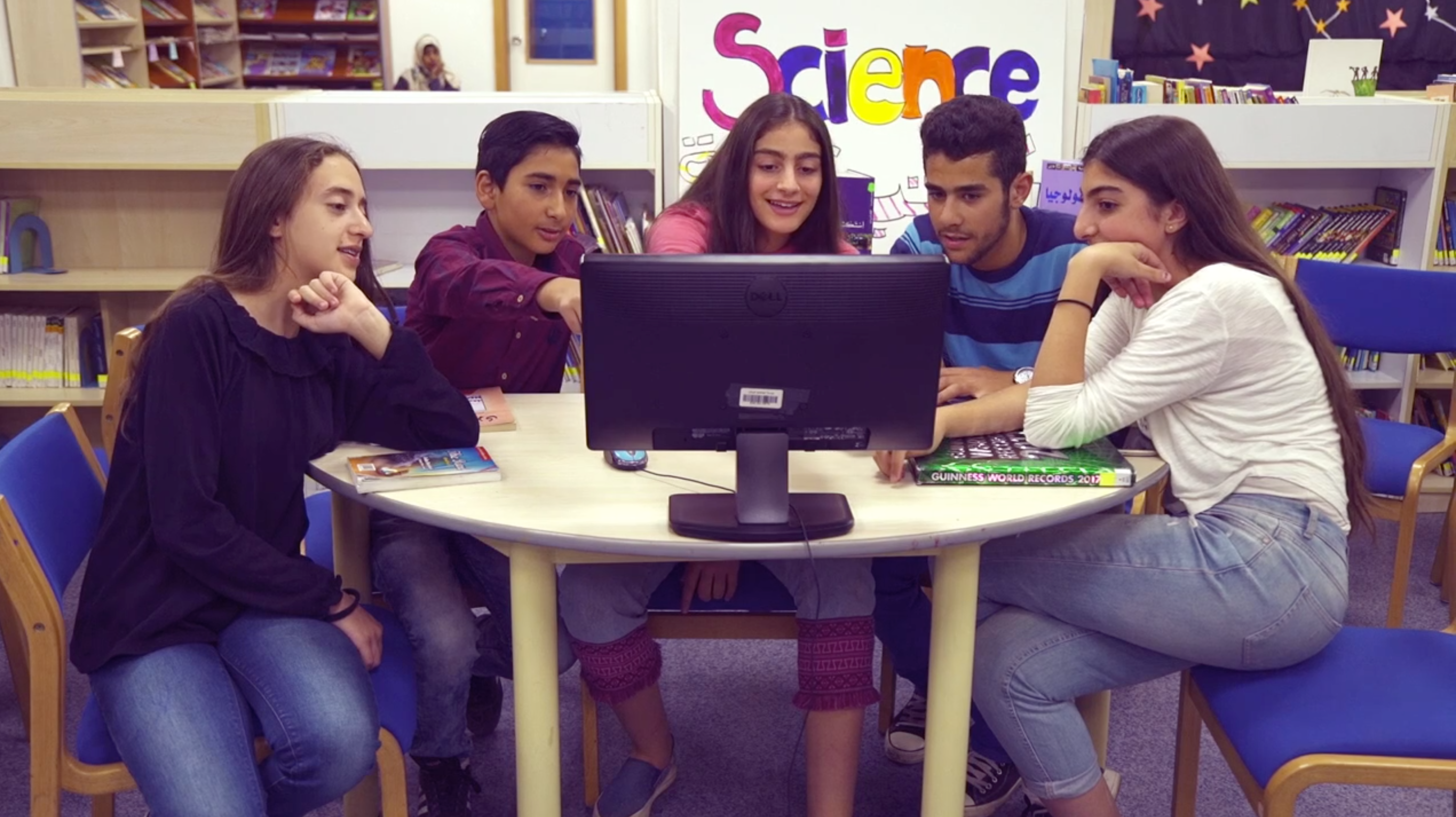
1. Tell us a little about yourself and Design Squad Global (DSG) Clubs?
My name is Saranya Sathananthan and I manage outreach efforts for Design Squad Global (DSG) Clubs, a project that provides opportunities for virtual exchanges among middle school-aged children to build their engineering and global competency skills. DSG clubs connect kids, ages 10-13 from across the globe, to engineer solutions to needs in their communities— including protecting the environment, making people’s lives better, improving their schools, and helping people stay healthy and safe. Clubs communicate with one another through asynchronous “partner exchanges,” which include photos, sketches, and/or videos about the participants and their engineering projects. They are implemented in afterschool programs and complemented by an award-winning PBS Kids website: http://www.pbskids.org/designsquad/
2. Describe the participants in this program.
An award from the Stevens Initiative has allowed DSG to expand its work in Jordan and the U.S. and develop a presence in Lebanon. Participants in the U.S. are underrepresented populations in at-risk urban and rural communities. In Jordan and Lebanon, the program also serves Syrian refugee youth. The majority of DSG clubs in the U.S., Jordan, and Lebanon work with youth who have had little to no international exchange experience in the formal classroom. The program targets kids ages 10-13 in informal education contexts like afterschool programs, libraries, and museums, though a significant number of schools have also participated. Across the globe, more than 500 DSG Clubs have been implemented in 40 countries and in over 125 U.S. cities.
3. The program focuses on building engineering and global competence skills among middle school children. Why is this learning important for this age group?
In an increasingly global world with growing demands for a new engineering workforce, the wellbeing of our societies for the years to come is in the hands of this next generation of students entering the global economy. There is a need for equipping young people with the skills and dispositions necessary to live in today’s world and address our planet’s most pressing problems. Engineering education and global competency are a natural fit in meeting those needs. The practice of engineering fosters skills that are vital to success in a global economy, including communication, teamwork, entrepreneurship, and iterative collaboration across differences toward a common goal. Many educational programs that integrate engineering and/or global competency are geared to students in higher education, but there are far fewer opportunities for younger children. DSG is creating the type of exposure to engineering and global competency for middle school students that serves as an “on ramp” for them on the path towards STEM careers.
4. What are the interesting outcomes you are starting to see in your program?
A summative evaluation of the project done in 2017 that included clubs in the U.S. and Jordan found that DSG’s model of collaboration builds participants’ understanding of engineering, motivation to participate in engineering activities, and confidence in taking effective and informed action on behalf of pressing global problems. DSG also helped children gain greater confidence with respect to helping their peers and respecting their peers’ ideas. Moreover, children learned how to relate with the children in their partner club and were significantly less likely to use stereotypes when they described children from other countries than children from clubs that did not have a global partner club. With respect to DSG club leaders, the study found strong evidence that the DSG club leader training and Club Guide helped leaders feel comfortable leading engineering activities and collaborating with leaders from other countries.
5. What makes the DSG model unique?
DSG is developing innovative ways to incorporate effective engineering education into informal learning environments aimed at targeting the middle grades. Coupled with promising practices in cross-cultural collaboration, it is informing the field on how engineering activities aimed at addressing real-world problems can successfully enable middle school students to meet the demands of an increasingly interconnected world. The special thing about DSG is that it helps children explore our world through an engineering and invention lens and learn how to communicate and collaborate with people who have different perspectives, cultures, and backgrounds. It helps children understand the importance of teamwork and develop an openness to new ideas, ways of thinking, and unfamiliar situations. Most of all, it provides a way for children to experience engineering and invention as powerful tools for change and making a difference in the world.
6. Why is virtual exchange important for your young participants?
In the digital age we are in, the world is at our fingertips, but depending on how we use it, technology can sometimes make us more distanced and disconnected with the world. Furthermore, different forms of media often perpetuate the existing negative stereotypes about people in different places. It’s why I value virtual exchange opportunities like DSG, because they can help dispel those perceptions and change the way we interact with one another for the better. I believe the more we have authentic opportunities to step outside our comfort zones and form genuine relationships with people who represent different parts of the fabric that make us part of the same world, the better we’ll be for it. I love when I see this happen with kids through DSG clubs. Because most participants have never previously engaged in a virtual exchange opportunity, it’s an exciting endeavor for them to be able to communicate and connect with real kids in different places in the world and learn that they have more things in common than they thought!
